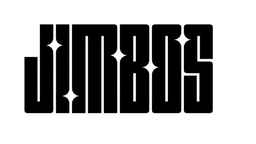How to Tell If Your Car Needs Paint Correction
Not every car needs a full correction—but if your paint looks dull, scratched, or cloudy in the sun, it may be time to break out the polisher. This guide will help you spot the signs that your paint is ready for correction—and whether a one-step polish or full multi-stage detail makes sense.
What Is Paint Correction?
Paint correction is the process of removing swirls, scratches, oxidation, and other defects from your vehicle’s clear coat using machine polishing and cutting abrasives. It's not waxing or covering defects—it's about removing them.
5 Signs Your Car Needs Paint Correction
1. Swirl Marks in Direct Sunlight
Look at your paint under direct sunlight or LED lighting. If you see circular, spiderweb-like patterns, that’s clear coat damage—usually from improper washing or drying.
2. Paint Looks Dull or Cloudy
Even without obvious scratches, paint can lose clarity and gloss due to micro-marring, oxidation, or embedded contaminants.
3. Water Doesn’t Bead or Sheet Anymore
Flat, lifeless paint usually means your protection is gone—and your clear coat is exposed and dirty. A polish restores slickness and clarity before reapplying protection.
4. RIDS (Random Isolated Deep Scratches)
If you notice random deep lines (especially from tree branches or car washes), they can often be corrected—or at least reduced—with a compound and polish.
5. You’re Prepping for Coatings or PPF
Ceramic coatings and paint protection film bond better to defect-free surfaces. A correction ensures the paint underneath looks perfect before it gets locked in.
How to Inspect Your Paint
- Use direct sunlight or an LED inspection light
- Wipe the panel with panel prep to remove fillers and see the true condition
- Compare corrected and uncorrected test spots for a clear “before and after”
When You Don’t Need Correction
Not every paint job needs polishing. You can skip correction if:
- The car is brand new and swirl-free
- You’re happy with the current gloss
- You’re doing a quick maintenance wash or interior detail only
What to Use for Correction
- Picture Perfect Polish – One-step polish for swirl removal and gloss boost
- Medium foam pad – Versatile for cutting and finishing
- Dual action polisher – Easy to use and safe for all levels
Pro Tip
Sometimes the biggest gains come from a single-stage polish. Start with a one-step like Picture Perfect Polish—if it delivers the finish you want, you’re done. If not, level up to a full two-stage correction.
Final Thoughts
If your paint isn’t popping in the sun, chances are it’s time for correction. Inspect it under good lighting, do a test spot, and let the results speak for themselves. You don’t need to chase perfection—but a little correction goes a long way in protecting and restoring your finish.
Start with Picture Perfect Polish



